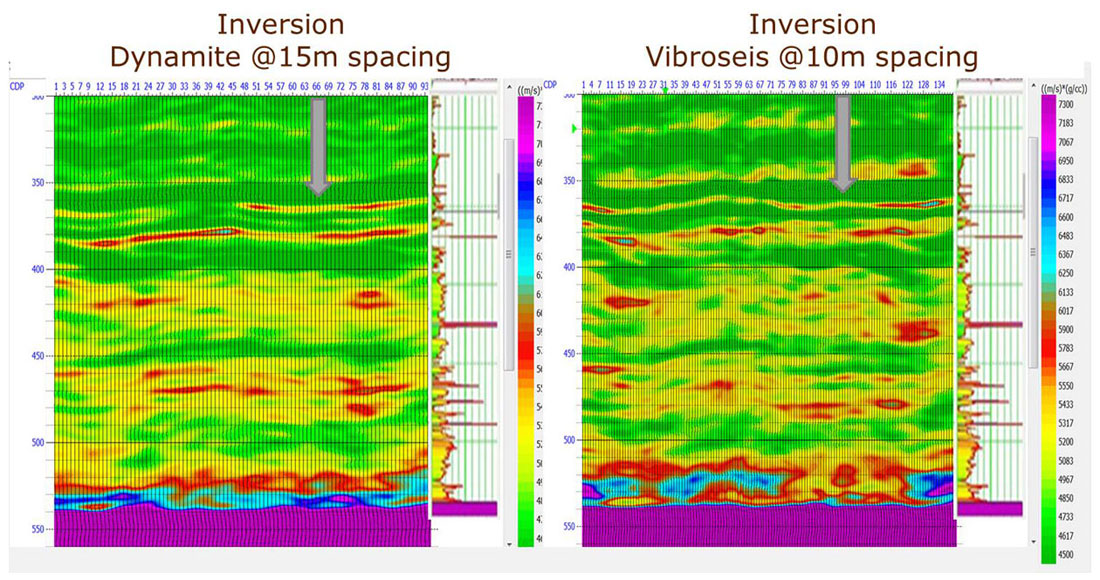In the latter half of 2013 Cenovus initiated a pilot to decrease the cost of acquiring 3D seismic data while maintaining data quality and safety standards.
Monitor 4D’s frequently made use of Vibroseis as an infill. Earlier testing indicated that Vibroseis acquisition could replace future baseline surveys; however investigation and testing was required.
Modelling suggested that in this area, the cost to acquire a Vibroseis survey is approximately 20% less than an equivalent dynamite survey. Additionally, Vibroseis offers ‘on the fly’ program scope changes. These points led us to investigate acquiring future 3D’s in the area with Vibroseis.
Field testing was required to validate any modelled sweep given the current and future seismic objectives. With background knowledge of the spectral content of the existing data, sweeps were designed to optimize both the PP & PS data. These data have differing requirements– a broad spectrum for PP, and a strong low end requirement for PS data.
The challenge was to design a sweep that moves smoothly through the bandwidth, dwelling in areas where energy is attenuated, and transitioning between ranges without causing artifacts, from harmonic feedback. Seven sweeps were brought forward for refinement prior to being executed in the field. Three sweeps were included for benchmarking: A traditional linear sweep, a simple high dwell and a low dwell sweep.
In February 2014 a 1.4km 2D line was acquired using our standard dynamite source parameters and the seven test sweeps. These lines were processed and analysis was performed on stacks and gathers. In addition, optimal sweep effort and bin size were also established through decimation of the dataset.
This initial test clearly proved that an appropriate Vibroseis sweep could replace dynamite on future 3D surveys in the area.
In January 2015 prior to 3D acquisition, two additional 2D test lines were acquired each with differing near surface issues. This test also served as a ‘final check’ for Vibroseis acquisition with poor near surface conditions.
During our analysis it became clear that the bandwidth of the data had been extended beyond dynamite bandwidth. This prompted a reduction in the bin size as better lateral resolution was attainable. The 3D geometry was redesigned to a natural bin of 10x10m with a natural fold of 18 at the target zone.
In February 2015, a 37 km2 3D was acquired with Vibroseis and a redefined orthogonal design. Some of the 20% savings associated with Vibroseis acquisition was diminished by the additional costs to decrease the line spacing. However additional savings were achieved through sweep effort optimization.
The actual acquisition costs were reduced by 22.5% over the equivalent dynamite survey.
In our area the response of the PP data proved Vibroseis to be a viable alternative to dynamite. However 2D test lines showed the PS data at the reservoir level while adequate was poorer than data acquired with the dynamite source.
Through design and testing of various sweeps we have been able to go beyond simple linear or high/low dwell parameters to a stable segmented sweep which is well behaved and replaces dynamite in this area. As the frequency response varies on a regional basis, we plan on future testing in areas where we operate.












Join the Conversation
Interested in starting, or contributing to a conversation about an article or issue of the RECORDER? Join our CSEG LinkedIn Group.
Share This Article